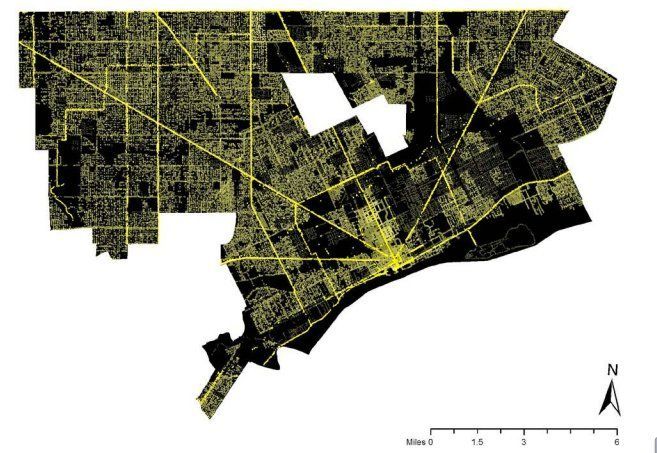
Detroit Mayor Dave Bing says he has a solution to the troubling lighting issues that have left many parts of the city in the dark. On Friday. he announced the creation of a four-stage strategy that he promises will eventually bring lighting services to every area of Detroit.
The plan would keep functioning lights on while allowing for the immediate repair of 3,300 lights that are currently reported as out of service and the removal of 20,000 alleyway fixtures. Under the plan, it would also keep ownership and control of the lighting system within the city of Detroit.
Mayor Bing's proposal, however, depends on the passage of three bills -- HB 5688, HB 5705 and SB 970 -- that are expected to come before the State House and Senate this week. The legislative package would allow for the establishment of a City of Detroit Public Lighting Authority to borrow $160 million to modernize its lighting system. The city is urging state legislators to back the plan.
“A yes vote in the State Senate will enable the City to solve a generations-old infrastructure problem that affects public safety and quality of life,” Mayor Bing said in a release. “It is important for the people of Detroit to know we have a strategy to get the city’s lights on. We need help from Lansing, and we are hopeful that help is forthcoming next week.”
Ironically, HB 5688 and 5705 were primarily sponsored by Rep. Maureen Stapleton (D-Detroit), while SB 970, which would raise the income tax for Detroit, is sponsored by State Sen. Bert Johnson (D-Detroit). Both lost their latest campaigns in last Tuesday's primary elections.
The first part of the program would begin in September before the establishment of a lighting authority. It includes repairs of reported light outages, the removal of 13,639 alleyway fixtures, as well as the converting old lights into modern units in the Sherwood Forest and Green Acres neighborhoods and along East and West Outer Drive and Grand Boulevard. The first stage also involves the opening of a call center that would dispatch crews that the city estimates could fix outages within a week.
For stage two the city would update lights around major thoroughfares such as Gratiot Grand River Avenue, Livernois, Michigan Avenue, Jefferson Avenue and in the downtown and Midtown districts. During this stage, which would take place between April 2013 and April 2014, the city would place 10,000 new bulbs in "transitional" areas and remove fixtures in those locations.
Phase three, lasting between April 2014 - April 2015, would convert new lights along remaining thoroughfares such as Junction and Pembroke and place 10,000 new bulbs in various areas of the city while continuing to remove fixtures. The last phase, which run from April 2015 to April 2016, would remove fixtures in "distressed" areas.
The city needs the three legislative bills to be passed to generate revenue for the plan.
"If it's not passed, we don't have the capital to do this," the mayor's chief operation officer Chris Brown told the Detroit News.
Detroit's City Council also needs to approve the plan, but according to the Detroit News, the Bing's administration can still overrule their rejection and enact it under the consent agreement.